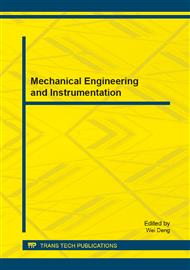p.3
p.9
p.15
p.21
p.28
p.33
p.40
p.46
Cracked ITO on Polyester Film Substrates for Electro-Optic Applications
Abstract:
Vacuum deposited indium tin oxide, ITO, is the material of choice for producing the transparent conducting electrodes used in a wide variety of electro-optic applications, including flat panel displays and solar cells. In addition to rigid substrates such as glass, ITO can be coated on flexible substrates for the production of flexible devices. Because the ITO is brittle it easily cracks if the flexible substrates are bent. The cracking of the ITO is therefore viewed within the industry as a major problem. Here we demonstrate how we can control the cracking of the ITO to produce uniform electrodes. This is accomplished by bending the film around a tight radius of curvature. The electrodes are narrow having a width of 5~10 μm. The cracks separating the electrodes are much narrower with a width of less than 0.05 μm. We demonstrate the use of these substrates using a polymer dispersed liquid crystal switchable window that can be switched in individual lines creating an electronic venetian blind effect. The addressed lines in the PDLC are defined by the contact electrode and by the applied field. Because the cracks are much smaller than the thickness of the active PDLC material they are not visible. In addition to switchable windows these substrates can be used to make passive matrix displays and touch screens. Uni-axially cracking can be easily integrated into a roll-to-roll manufacturing process.
Info:
Periodical:
Pages:
15-20
Citation:
Online since:
February 2014
Authors:
Price:
Сopyright:
© 2014 Trans Tech Publications Ltd. All Rights Reserved
Share:
Citation:


